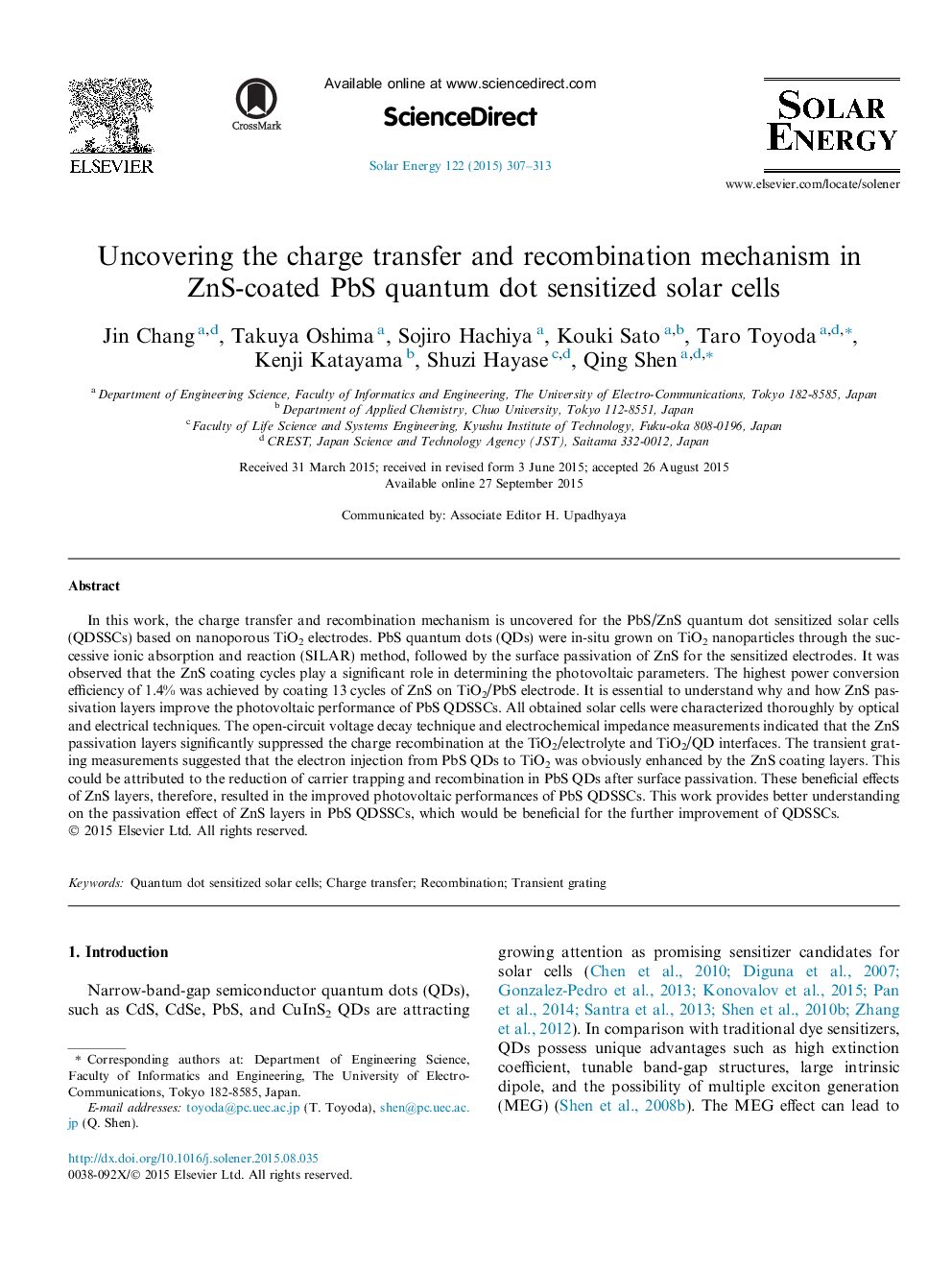| Article ID | Journal | Published Year | Pages | File Type |
|---|---|---|---|---|
| 1549584 | Solar Energy | 2015 | 7 Pages |
Abstract
In this work, the charge transfer and recombination mechanism is uncovered for the PbS/ZnS quantum dot sensitized solar cells (QDSSCs) based on nanoporous TiO2 electrodes. PbS quantum dots (QDs) were in-situ grown on TiO2 nanoparticles through the successive ionic absorption and reaction (SILAR) method, followed by the surface passivation of ZnS for the sensitized electrodes. It was observed that the ZnS coating cycles play a significant role in determining the photovoltaic parameters. The highest power conversion efficiency of 1.4% was achieved by coating 13 cycles of ZnS on TiO2/PbS electrode. It is essential to understand why and how ZnS passivation layers improve the photovoltaic performance of PbS QDSSCs. All obtained solar cells were characterized thoroughly by optical and electrical techniques. The open-circuit voltage decay technique and electrochemical impedance measurements indicated that the ZnS passivation layers significantly suppressed the charge recombination at the TiO2/electrolyte and TiO2/QD interfaces. The transient grating measurements suggested that the electron injection from PbS QDs to TiO2 was obviously enhanced by the ZnS coating layers. This could be attributed to the reduction of carrier trapping and recombination in PbS QDs after surface passivation. These beneficial effects of ZnS layers, therefore, resulted in the improved photovoltaic performances of PbS QDSSCs. This work provides better understanding on the passivation effect of ZnS layers in PbS QDSSCs, which would be beneficial for the further improvement of QDSSCs.
Related Topics
Physical Sciences and Engineering
Energy
Renewable Energy, Sustainability and the Environment
Authors
Jin Chang, Takuya Oshima, Sojiro Hachiya, Kouki Sato, Taro Toyoda, Kenji Katayama, Shuzi Hayase, Qing Shen,
